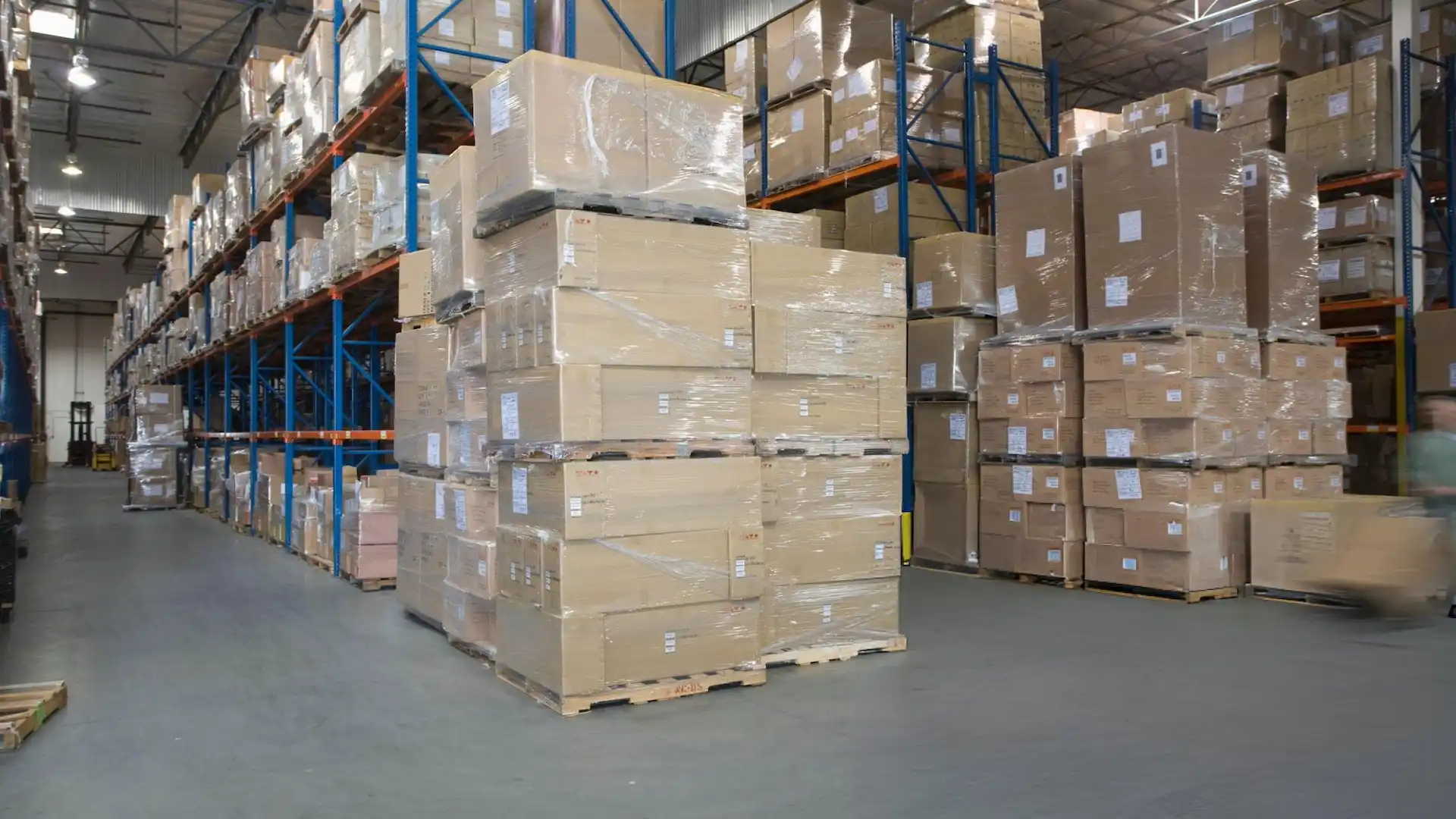Guide to Fulfillment by Merchant (FBM) on Amazon
.webp)
Are you an Amazon seller considering your fulfillment options? FBM (Fulfillment by Merchant) could be a great choice, especially if you prefer to have direct control over your inventory and shipping processes. This guide will delve into what FBM means, how it can be beneficial, and some essential strategies to maximize your sales through FBM on Amazon.
What Does FBM Mean for Amazon Sellers?
The term FBM, or Fulfillment by Merchant, refers to a selling method where Amazon sellers are responsible for handling storage, packaging, and shipping of their products directly to customers. Unlike FBA (Fulfillment by Amazon), where Amazon takes charge of the logistics, FBM Amazon sellers maintain greater control over their inventory, which can lead to cost savings and personalized customer service.
Understanding FBM meaning is crucial for sellers who want to scale their operations while managing their logistics. It allows for flexibility in shipping methods and the opportunity to build closer customer relationships through personalized packaging and inserts.
How to Boost Your Sales with FBM
Using FBM on Amazon not only gives you control but also challenges you to optimize your sales strategy to stay competitive. Here are a few tips:
- Optimize Your Listings: Ensure your product descriptions are detailed and keyword-rich. High-quality images and positive reviews can significantly impact buyer decisions.
- Competitive Pricing: Keep your pricing competitive to attract more buyers. Monitor your competitors and adjust your prices accordingly.
- Exceptional Customer Service: Fast response times and resolving issues swiftly can improve customer satisfaction and lead to repeat business.
Differences Between FBA and FBM
Understanding the differences between FBA (Fulfillment by Amazon) and FBM (Fulfillment by Merchant) is crucial for Amazon sellers to decide which fulfillment method aligns best with their business goals and operational capacities. Here are the key distinctions:
- Fulfillment Responsibilities: In FBA, Amazon takes care of the entire fulfillment process, including storage, packing, shipping, and customer service. With FBM, the seller is responsible for all these tasks.
- Control Over Inventory: FBM sellers maintain complete control over their inventory, which is ideal for products that require special handling or are in limited stock. FBA users hand over inventory to Amazon, which manages it along with other sellers' products.
- Cost Implications: FBA can be more costly due to fees for handling and storage, especially for slow-moving goods. FBM might reduce costs if the seller can efficiently manage fulfillment.
- Prime Eligibility: FBA products are automatically eligible for Amazon Prime, which can significantly boost sales due to customer preference for fast shipping. FBM sellers can qualify for Prime only if they enroll in Amazon's Seller Fulfilled Prime program.
- Customer Service: Amazon handles customer service and returns for FBA orders, which can be a relief for sellers. In contrast, FBM sellers must manage customer interactions and service directly.
Utilizing a Third-Party Logistics Provider for FBM
For Amazon sellers opting for FBM (Fulfillment by Merchant), partnering with a Third-Party Logistics (3PL) provider can offer a strategic advantage in managing the complexities of fulfillment. A 3PL service takes on the responsibility of warehousing, packing, and shipping on behalf of the seller, combining the hands-on control of FBM with the efficiency of professional logistics management.
Using a 3PL can significantly enhance operational efficiency for FBM sellers by offering scalable solutions that adapt to fluctuating demand. This arrangement is particularly beneficial for sellers who want to focus on scaling their business without the added burden of day-to-day logistical operations. Additionally, 3PL providers often have established shipping networks that can reduce delivery times and costs, directly impacting customer satisfaction and competitiveness in the marketplace. This collaboration allows sellers to leverage expert logistics support while maintaining the essence of FBM—control over their products and brand experience.
Using a Third-Party Logistics (3PL) provider for Fulfillment by Merchant (FBM) on Amazon offers several significant benefits:
- Scalability: 3PL services can easily adapt to the changing needs of your business, accommodating fluctuations in demand without requiring you to invest in additional space or personnel.
- Cost Efficiency: Leveraging the shipping and storage solutions of a 3PL can often be more cost-effective than managing these aspects in-house, especially in terms of bulk shipping rates and warehousing costs.
- Focus on Core Business: Outsourcing logistics allows sellers to concentrate on core business activities such as product development, marketing, and customer engagement, rather than getting bogged down by the details of order fulfillment.
- Expertise and Experience: 3PL providers are experts in logistics and have the experience to handle complex supply chain challenges, which can help avoid common pitfalls that might cost time and money if handled internally.
- Faster Delivery Times: With multiple warehousing options across strategic locations, 3PLs can often offer faster shipping times, which is a critical factor in customer satisfaction and competitive differentiation.
- Reduced Risk: 3PL companies manage the risks associated with warehouse management, transportation, and operational logistics, reducing the burden on sellers.
- Flexibility: 3PL services offer flexibility in handling peak seasons or sales fluctuations without the need for the seller to make drastic changes in their infrastructure.
- Regulatory Compliance: 3PL providers are adept at navigating complex regulatory environments, which can be particularly beneficial for sellers expanding internationally.
Using an FBM Shipping Calculator to Manage Costs
One of the critical aspects of managing FBM (Fulfillment by Merchant) on Amazon efficiently is understanding and controlling your shipping costs. An FBM shipping calculator is an invaluable tool that helps you estimate shipping costs based on package size, weight, and destination. This can help you decide the most cost-effective shipping methods and adjust product pricing to maintain profitability.
Key Cost Factors in FBM Shipping
When using a shipping calculator for FBM, several cost factors need to be considered to optimize your shipping strategy:
- Package Size and Weight: Larger and heavier packages typically incur higher shipping costs. Optimizing packaging to fit the product snugly without excess weight can reduce costs.
- Shipping Distance: Costs vary significantly depending on how far a package needs to travel. Utilizing zone shipping can help in reducing costs by aligning inventory placement with the geographic location of your customers.
- Carrier Rates: Different carriers offer varying rates and discounts based on volume, size, and service type. Comparing carrier rates regularly ensures that you are getting the best deal.
- Service Type: Expedited shipping costs more than standard shipping. Offering multiple shipping options can help cater to different customer needs and budgets.
- Fuel Surcharges: These can fluctuate based on economic conditions and directly impact shipping costs. Keeping an eye on these changes is important for maintaining cost efficiency.
- Seasonal Fluctuations: During peak seasons like holidays, shipping costs can increase due to higher demand. Planning for these changes can help in managing expenses better.
- Insurance and Tracking: Adding insurance and tracking increases costs but can provide security and trust, enhancing customer satisfaction. Consider these services for high-value items.
- Handling Fees: Some products require special handling or packaging, which can add to the cost. It's essential to factor these into your pricing strategy.
Conclusion
While FBM on Amazon requires more hands-on management, it offers flexibility and the potential for higher margins. Start implementing these tips today to enhance your FBM strategy and grow your business. If you're planning to use FBM services and need professional logistics support, don't hesitate to reach out to Atomix Logistics. Our experts are ready to help you streamline your operations and maximize your success on Amazon. Reach out to us today to get started!
Frequently Asked Questions About Fulfillment by Merchant (FBM) on Amazon
What is Fulfillment by Merchant (FBM)?
Fulfillment by Merchant (FBM) is a method used by Amazon sellers where the seller is responsible for handling the storage, packing, shipping, and customer service of their products instead of Amazon. This gives sellers more control over their inventory and customer interactions.
How does FBM differ from FBA?
In Fulfillment by Amazon (FBA), Amazon takes care of all logistic responsibilities, including storage, packing, shipping, and customer service. In contrast, FBM requires the seller to manage these aspects themselves, which can lead to greater control but increased responsibility.
Is FBM cheaper than FBA?
FBM can be less costly than FBA, particularly for products that are bulky, slow-moving, or have lower turnover rates, as FBA charges fees for storage and fulfillment. However, FBM requires the seller to handle logistics, which can also incur significant costs if not managed efficiently.
Can FBM sellers use Amazon Prime?
FBM sellers can be eligible for Amazon Prime if they enroll in Amazon’s Seller Fulfilled Prime program, which requires them to meet Amazon's rigorous delivery standards. This allows them to offer Prime shipping without using FBA.
What are the advantages of using a 3PL for FBM?
Using a Third-Party Logistics provider (3PL) can offer several advantages for FBM sellers, including scalability, cost efficiency, reduced operational risk, and access to advanced technology for better inventory and shipping management.
Is FBM suitable for all types of products?
FBM might be more suitable for products that require special handling, are made to order, or are not cost-effective under FBA due to size or storage needs. Sellers who want closer control over inventory and customer service may also prefer FBM.
Can I switch from FBA to FBM?
Yes, sellers can switch from FBA to FBM if they find that managing fulfillment themselves is more strategic or cost-effective. The process involves changing the fulfillment method in the Amazon Seller Central and ensuring you have the infrastructure to manage logistics independently.

.svg)
.svg)
.svg)




